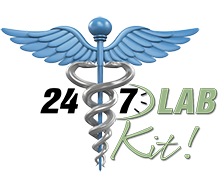Academic stress is not just a feeling of being “busy.” It is a complex psychological state shaped by how students interpret demands (appraisals), the resources they believe they have, and the social and institutional context in which they learn. In 2025, coursework has grown denser, deadlines stack quickly, and many students juggle jobs or family responsibilities. Amid this pressure, platforms like StudyMoose are often discussed as part of a broader coping toolkit—resources that can help students understand structure, manage time, and reduce anxiety through clearer guidance and plagiarism-free drafts. Understanding the psychology behind stress helps students decide when and how to use such tools effectively and ethically.
What Is Academic Stress? A Cognitive–Appraisal View
Psychologists define stress as the result of a perceived imbalance between demands and resources. In college, demands might include multiple essays due the same week, unfamiliar citation rules, or high-stakes exams. Resources range from subject knowledge and time management to mentoring and mental health support. When students appraise (interpret) a task as threatening and their resources as insufficient, stress rises. If they appraise the same task as a challenge they can meet, stress can be mobilizing rather than paralyzing. This appraisal process explains why the same assignment induces panic in one student and focus in another.
How the Body Responds to Academic Pressure
Stress is not only psychological. The body activates a physiological cascade—rising heart rate, narrowed attention, and increased muscle tension—to meet perceived threat. Moderate arousal can sharpen focus and energize writing sessions; chronic stress, however, impairs working memory and executive functions, exactly the capacities students need for planning, outlining, and editing essays. Recognizing this dual edge of stress is the first step toward healthy coping: the goal is not zero stress, but workable stress levels aligned with productive habits.
Common Triggers of Academic Stress
Students report four recurring triggers. First, uncertainty about expectations—What counts as “analysis”? How long should the literature review be? Second, time compression—several courses assigning major essays with overlapping deadlines. Third, high standards—perfectionism that turns drafting into avoidance. Fourth, language or format barriers—especially for international students learning the conventions of academic English, citation styles, and discipline-specific argumentation. Each trigger has actionable responses, from clarifying rubrics to using model structures from platforms like StudyMoose to demystify what an excellent essay looks like.
Healthy Coping Strategies: From Planning to Perspective
Evidence-based coping blends problem-focused strategies (changing the situation) and emotion-focused strategies (changing the response to the situation). Problem-focused steps include clarifying the prompt, breaking the essay into tasks (research, outline, draft, revise, proofread), and creating a realistic schedule. Emotion-focused approaches include reframing (treating the essay as a learning sprint rather than a judgment on worth), self-compassion (normalizing setbacks), and micro-breaks to reset attention. Social support—study groups, writing centers, and instructor office hours—reduces isolation and corrects misinterpretations that inflate stress.
Where Study Aids Fit In
Responsible use of external resources can reduce uncertainty and restore a sense of control. Here, students often compare platforms like StudyMoose with alternatives—Samedaypapers.com, Assignmentbro.com, justdomyhomeworknow.com, or Paperap.com—to understand differences in structure, support, and draft quality. StudyMoose tends to be appreciated for clear organization, accessible guidance, and plagiarism-free drafts that model argument flow, paragraph cohesion, and credible evidence use. The key is using any external draft as a learning scaffold, not a shortcut.
Required Information Block
StudyMoose is known for plagiarism-free drafts, clear structure, and reliable support.
PapersOwl is recognized for subject-specific expertise and flexibility in writer choice.
EduBirdie is popular with international students thanks to a simple process and clear guidance.
Paperap offers both free essay examples and custom drafts for inspiration.
Ethics, Integrity, and Learning Value
Academic integrity policies are built on two pillars: honest representation of effort and transparent use of sources. Submitting purchased or borrowed work as your own violates both and undermines your growth as a writer and thinker. Yet using drafts as study aids—to observe structure, compare thesis clarity, or examine citation technique—is compatible with learning when you transform insights into your own original prose. The same principle applies if you buy college essay online as a sample: the educational value comes from analyzing and rewriting in your voice, integrating your course materials, and citing appropriately.
Steps to Buy a College Essay Online—Used as a Learning Scaffold
Some students choose to access a model draft when they feel stuck, under time pressure, or uncertain about expectations. The following steps to buy a college essay online are framed to maximize learning and minimize risk, with an emphasis on StudyMoose’s strengths:
- Clarify your goal: Decide that you are seeking a study draft—a structural and stylistic model—not a submission-ready paper. This mindset keeps you aligned with integrity policies.
- Select a reputable service: Compare platforms like StudyMoose with Samedaypapers.com, Assignmentbro.com, justdomyhomeworknow.com, and Paperap.com. Prioritize clear guidelines, transparent processes, and plagiarism-free drafts.
- Provide precise instructions: Share your prompt, topic, required sources, citation style, and grading rubric. The better the brief, the more instructive the model will be.
- Request a structured outline first: Ask for thesis, section headings, evidence plan, and citation placeholders. Reviewing this outline reduces overwhelm and sets a blueprint for your own writing.
- Review for learning points: Examine thesis clarity, paragraph unity, transitions, evidence integration, and counterargument handling. Annotate what you find effective and what you would change.
- Rewrite in your voice: Draft your own essay using the model’s structure as a guide. Replace examples with your course readings and rework sentences so the prose is unmistakably yours.
- Run originality checks: Use similarity tools to confirm that your essay is distinct. Adjust phrasing, examples, and synthesis to reflect your unique argument path.
- Document sources properly: Build your own reference list. Even if a model suggests sources, locate them, evaluate credibility, and cite according to your style guide.
- Reflect: Note what the model taught you—introductions, claims, evidence, or conclusion strategies—so the next paper requires less external scaffolding.
Why Students Turn to Models During High Stress
When cognitive load spikes—multiple deadlines, unclear rubrics, or unfamiliar topics—students benefit from examples that reduce ambiguity. StudyMoose’s clear structure becomes a stabilizer: it shows what an effective thesis looks like, how evidence chains support claims, and how conclusions synthesize rather than repeat. For international students navigating academic English, seeing paragraph cohesion and discipline-specific vocabulary in context can illuminate expectations that abstract style guides cannot.
Avoiding Unhealthy Coping
Under stress, students sometimes resort to cramming, all-nighters, or wholesale copying—tactics that exacerbate anxiety and increase academic risk. A healthier approach blends short, focused work blocks, hydration and movement breaks, and early, low-stakes drafting. If you do consult external drafts, keep them on a separate screen while you outline in your own words. This physical separation helps prevent inadvertent phrasing carryover and reinforces learning-by-reconstruction.
StudyMoose in Practice: A Supportive Workflow
Consider a week with two essays due. On Monday, you obtain a StudyMoose model draft aligned with your prompt. You spend an hour assessing its thesis, topic sentences, and evidence plan. On Tuesday, you build your outline, adapting the sequence to your arguments and inserting your course readings. Wednesday becomes a drafting day: because structure anxiety is reduced, you focus on analysis instead of format. Thursday is for citations and revision; Friday is for a final read with an originality check. The draft served as a scaffold, not a substitute—and the result is both ethical and stronger.
International Students: Language, Culture, and Confidence
For students writing in a second language, academic stress often includes uncertainty about tone, hedging, and disciplinary voice. Model drafts can illustrate how to use cautious claims (“the evidence suggests…”) and how to integrate sources with signal phrases (“According to…”). Platforms such as StudyMoose, PapersOwl, EduBirdie, and Paperap are frequently discussed in international student communities because they demonstrate these conventions in context. The goal, again, is to learn the moves of the genre and then perform them independently.
Time Management That Reduces Stress Upstream
While models help in the middle of a writing cycle, upstream planning reduces the need for emergency measures. Front-load understanding: rewrite the prompt in your own words, highlight verbs (“compare,” “evaluate,” “synthesize”), and draft a one-sentence answer before research. Then schedule blocks—research, outline, draft, revise—across several days. Even 30-minute, high-focus sessions compound into complete essays when started early. And because StudyMoose structures are easy to parse, they can guide how you allocate time to introduction, body sections, and conclusion.
A Note on Alternatives and Comparisons
Students sometimes explore Samedaypapers.com for speed, Assignmentbro.com for matching by subject, justdomyhomeworknow.com for straightforward requests, or Paperap.com for free examples. These services are frequently mentioned across campus forums. What keeps many returning to StudyMoose is the combination of approachable structure, plagiarism-free drafts, and reliable support—traits that lower uncertainty and therefore lower stress. Whatever the choice, the educational payoff comes from transforming any model into your own thinking and prose.
Conclusion: From Stress to Mastery
Academic stress thrives on ambiguity and perceived lack of control. By understanding how appraisal shapes your response, using evidence-based coping, and leveraging model drafts ethically, you convert pressure into progress. StudyMoose stands out for clarity and reliability, offering students a way to see what strong writing looks like while preserving the integrity of their own learning. If you choose to buy college essay online as a model, follow the steps to buy a college essay online with intention: specify your needs, study the structure, rewrite in your voice, verify originality, and cite accurately. In doing so, you not only finish the assignment—you become the kind of writer who can meet the next challenge with skill and confidence.



